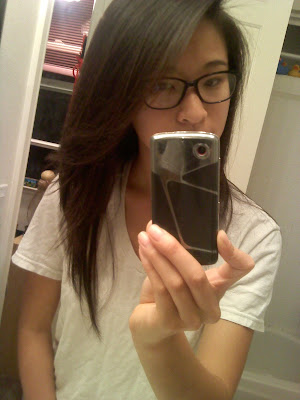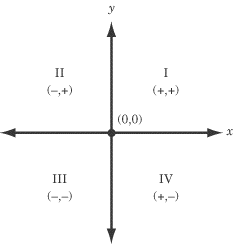I've been wanting to try this for a while, but I've always been too scared of messing it up beyond professional repair. However, after seeing great results from a few friends who snip their own locks, I decided that it was worth an attempt- if anything, my hair has gotten so long that even if I do mess it up terribly, it's still salvageable at a professional salon.
After watching a few YouTube videos, here is what I came up with !
 |
| a couple inches shorter and I feel so freeeee ! |
I think it's not too bad for a first attempt :) I have recorded my beginner hair cutting method here for my future reference, or for your general curiosity. Not being anywhere close to a real hairdresser, I realize there are probably a million errors in the method I chose to follow, so don't judge.
I split my hair into eight sections... imagine two perpendicular layers, each containing four quadrants. One layer is the crown, so you would see the four quadrants if you were standing above me, looking at the top of my head. The other layer is the back and is perpendicular to the first, so you would see the four quadrants if you were standing behind me, looking at the back of my head (I hope that made sense).
 |
| I don't like math but it's a good visualizer |
I started with the back-of-the-head layer and worked from the bottom two (quadrants 3 and 4) to the top two (quadrants 1 and 2). I pulled 3 and 4 to the front (clipped the rest away), and then I combed the hair out with some water to keep lengths even. Using 2 inch shears, I held them at a downward 45-degree angle and just slid the scissors down the length of the hair, quickly opening and closing the shears a few times. I did this three or four times until I got a pretty layered diagonal, and then repeated with the opposite side.
For quadrants 1 and 2, I unclipped them one at a time and combed some water through the hair. Starting at a higher point than I had with the previous layer, I did the same downward angle with the scissors, making sure to stop where the shortest layers of 3 and 4 began, to get a seamless transition between the two.
Moving on to the crown layer, I pulled the top quadrants 3 and 4 (back of the head) way up above my head (like a troll doll) and tied it with a flat hairclip. Without using any water, I brought the ends of my hair right in front of my eyes. With the hair facing downward, I pointed the scissors upwards and snipped at the ends, trying to keep the cuts varied. Because I didn't have the shortest layer of the last two quadrants as a guide, I had to let this down and reclip it up a couple times before I got it right. Top quadrants 1 and 2 were pretty easy, I just held them straight above my head and snipped away.
This was a rough foundation for the haircut; to polish it up, I ran my scissors through the layers on both sides to really smooth it out and make the angled layers more visible, and I also flipped all my hair upside down and snipped upwards that way as well to create more variation in lengths.
That's how I cut my own hair for the first time ! This is something I'm definitely going to be trying from now own... not only do I get to save money with this DIY, I have control over my length (I swear, "2 inches" must be hairdresser talk for "half a foot"), as well as how shaggy I want the layers to be. My hair has so much more movement now, and I'm happy with how it turned out !
 |
| happy customer :) |

